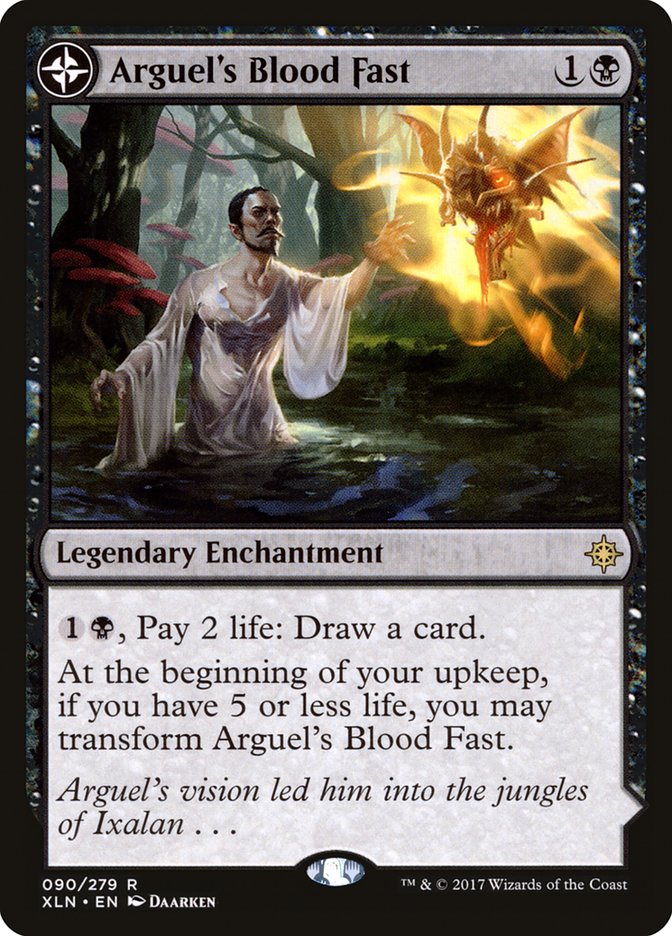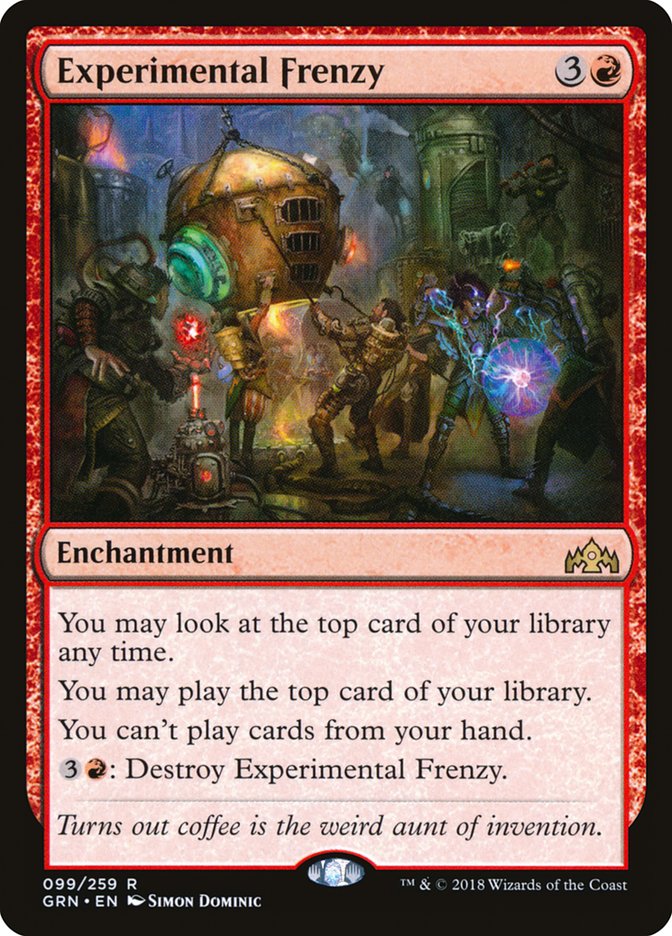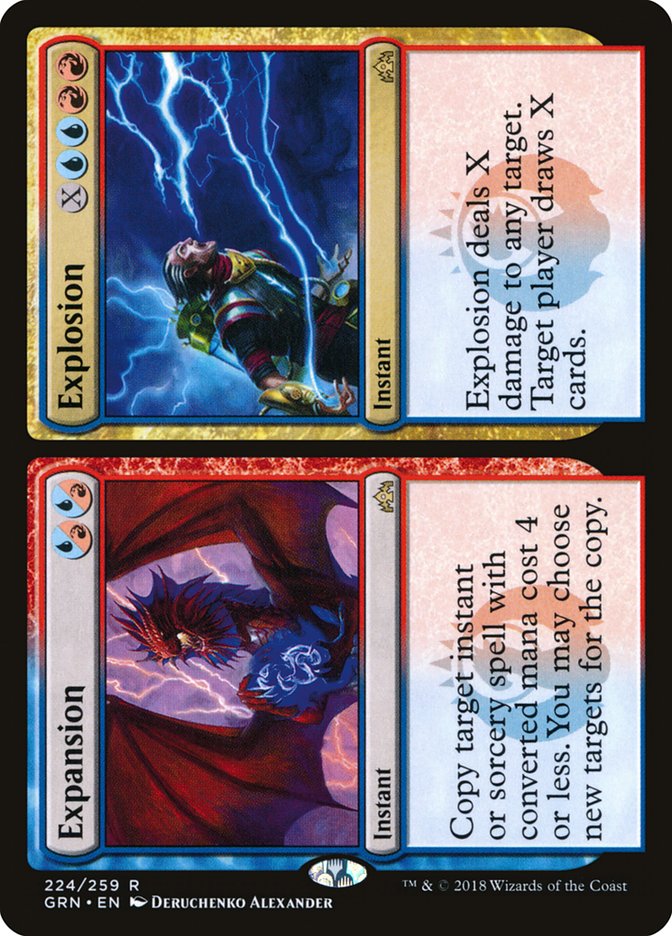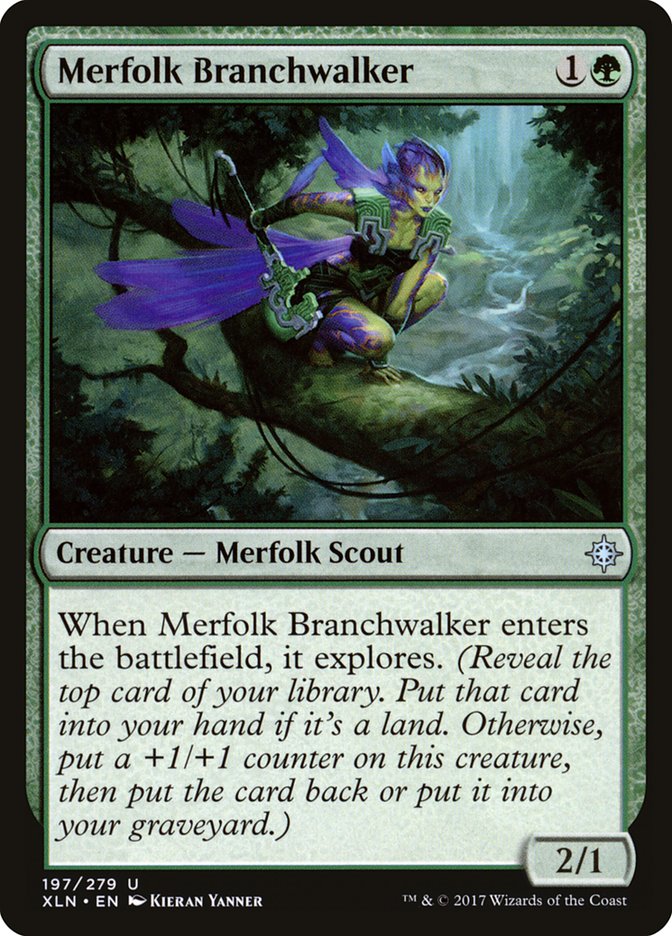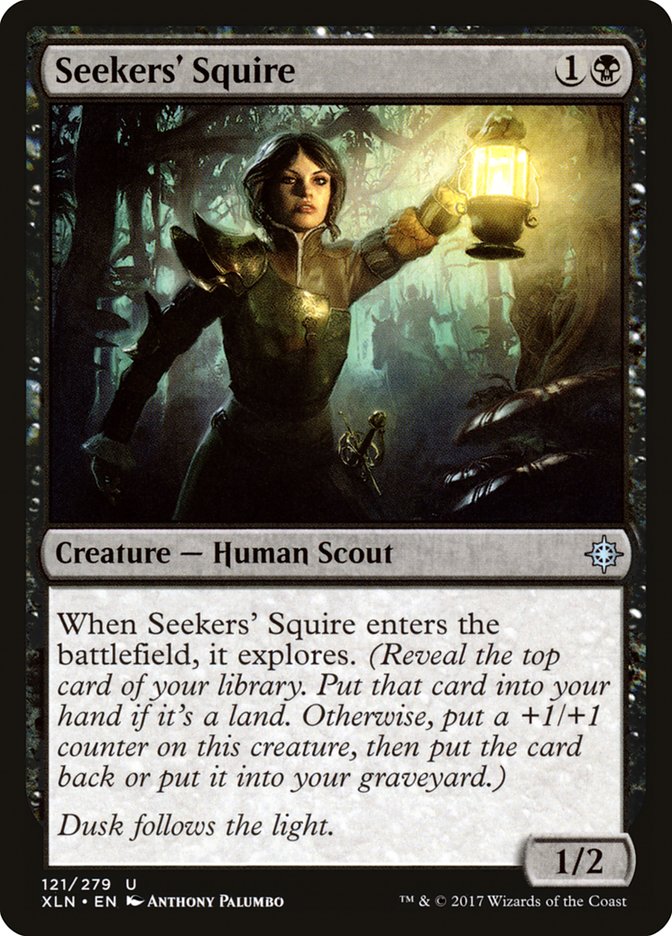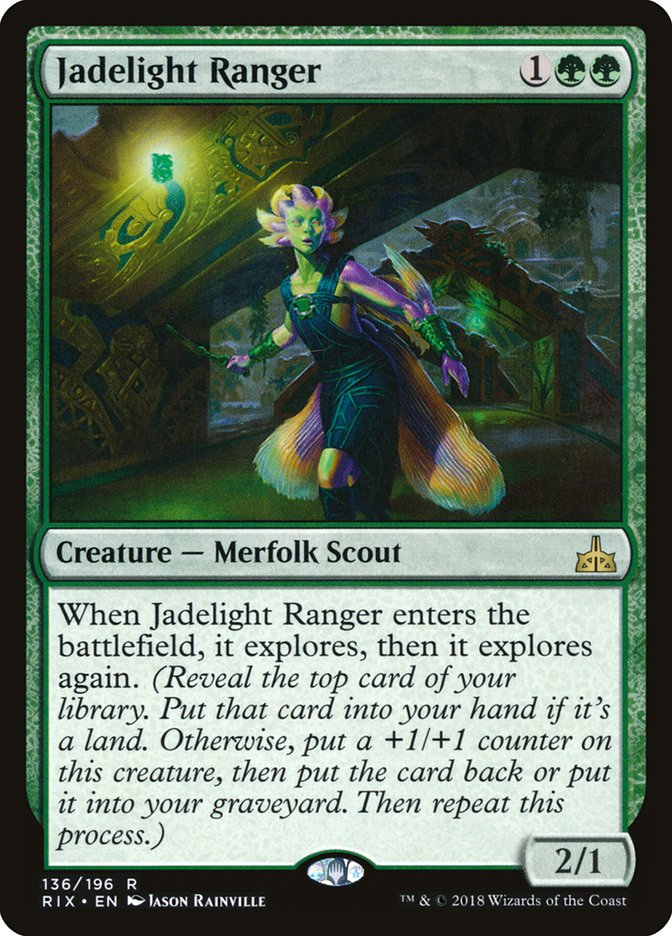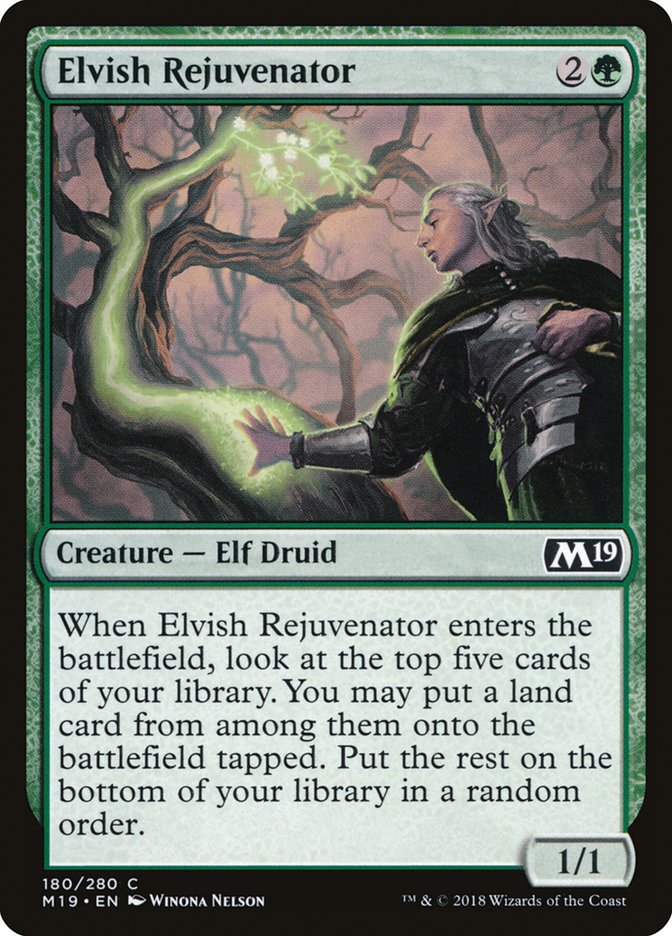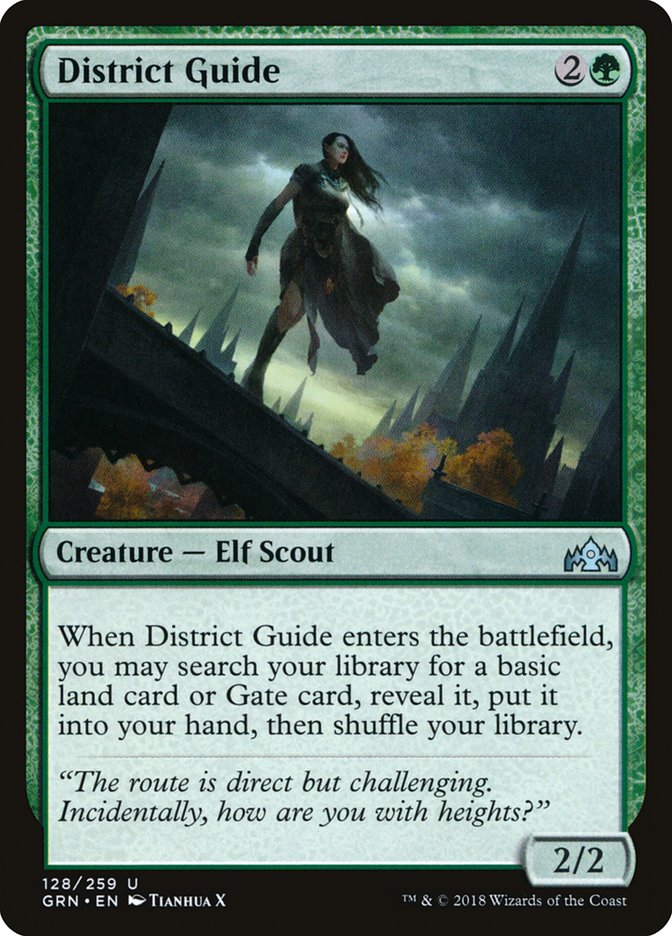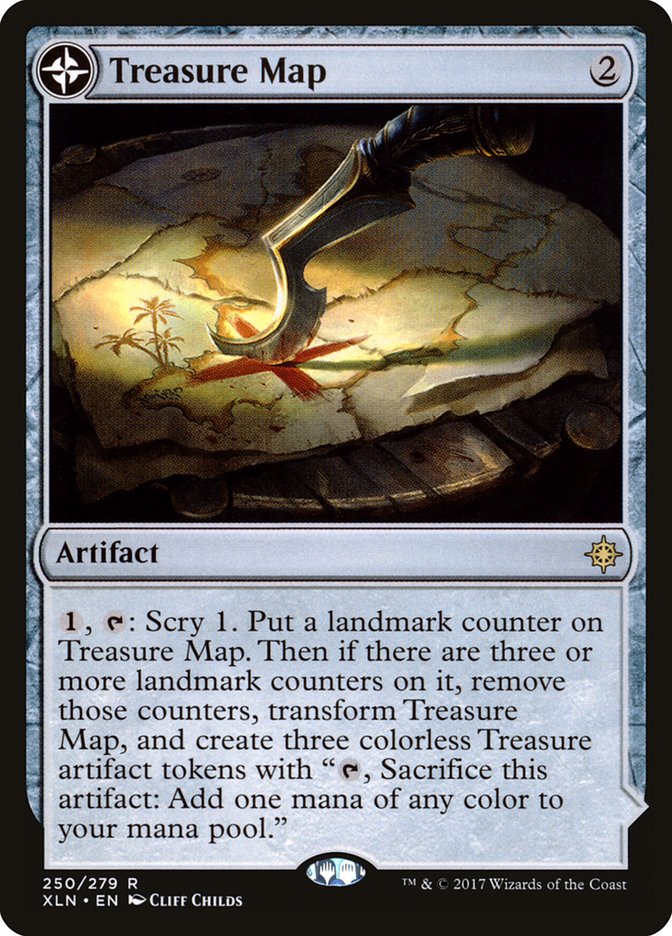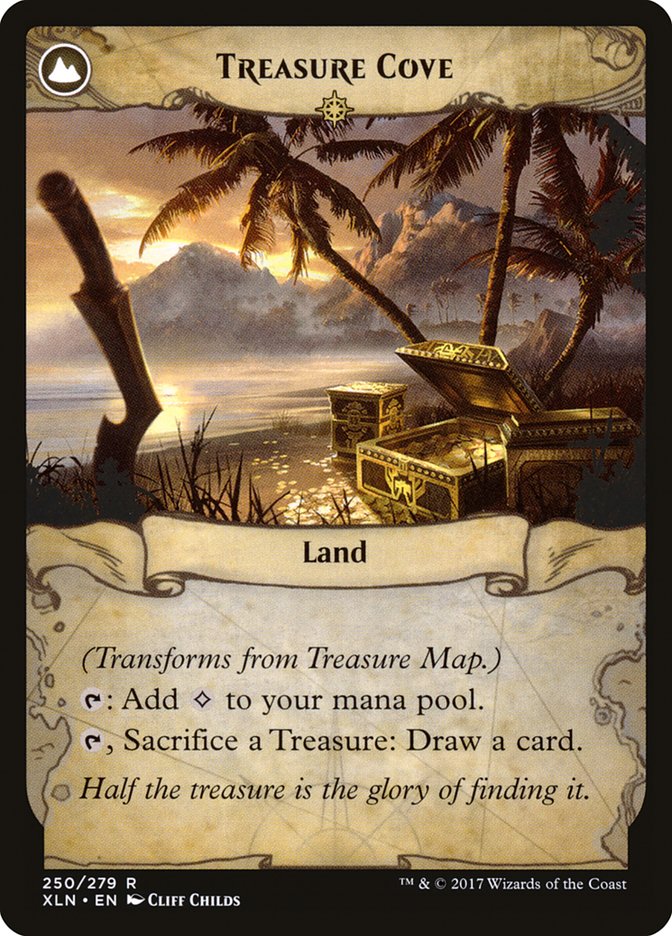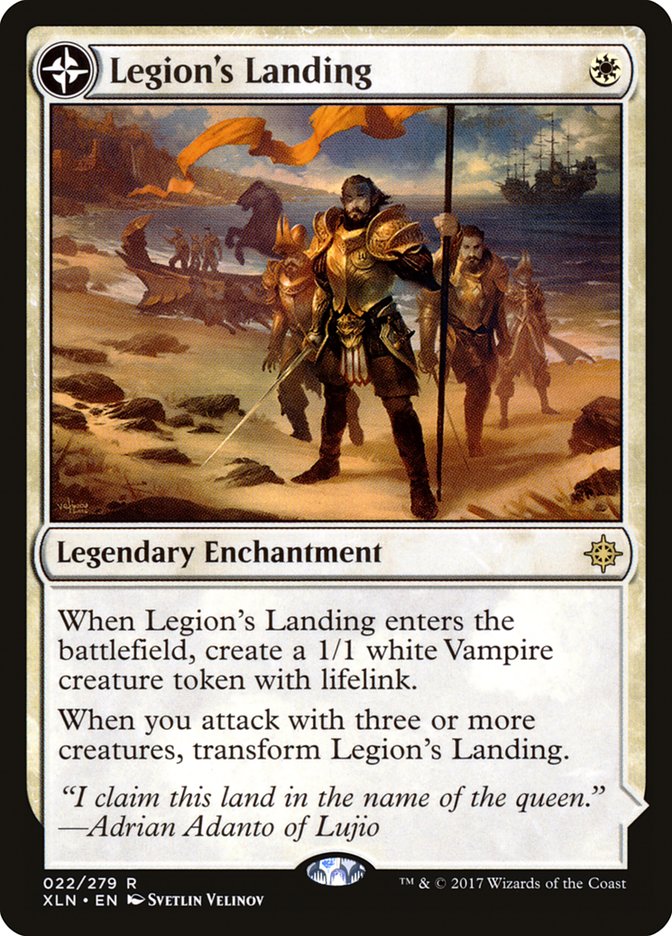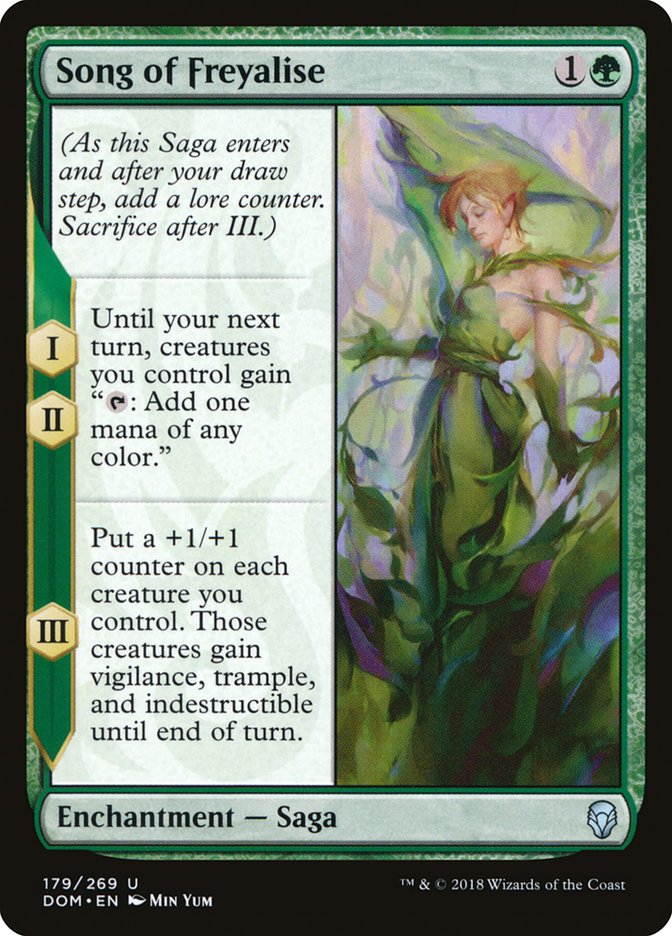Trivia: The original name of Magic: the Gathering was Mana Clash. It’s a
fitting name, given that, in general, the player who uses more mana will
win most of the time. The game is very much about optimizing your ability
to generate and spend mana.
Indulge me while I engage in some oversimplification of history:
Historically, there weren’t that many ways to draw cards. Early Magic
theory focused on card advantage, because getting a two-for-one was
relatively rare and put a player significantly ahead, especially because
cards that exchanged one-for-one were so efficient and reliable. Creatures
were smaller and answers were better, so games didn’t usually end before
players had opportunities to cast all of their spells, so having the last
card remaining when the dust settled was key.
Then people learned to build better aggressive decks and they were capable
of ending the game before their opponent could use all of their cards.
There still wasn’t a lot of card draw, so the game was largely about
curves; if the deck with the lower curve could end the game fast, they’d
have spent more mana over the course of the game because the deck with the
higher curve would have had early turns where they weren’t able to use
their mana. If the deck with the higher curve could make it to the
lategame, they could catch up on mana spent very quickly because the
opponent would run out of cards to play and maybe spend around two mana a
turn playing the card off the top of their deck, while the player with the
higher curve might still have several four+ mana spells to deploy over
several turns in the mid to lategame, easily overpowering the top of their
aggressive opponent’s library.
ways to get an advantage there, so I think finding the best way to do that
will offer the best results.
At some point, most expensive threats started doing something when they
entered the battlefield. If you spend more than 2-3 mana on a card, it was
just expected that your card would be generating a two-for-one of some
kind. This made card advantage a lot more fluid, but still didn’t change
the fundamental trend that the deck with the higher curve would win a
longer game, and the deck with a lower curve would win a shorter game,
still in a way that reduces to when the decks are best at efficiently using
their mana.
I personally love the transition to card advantage being a more fluid
concept. I kind of think the game is best when players always have multiple
things to spend their mana on so that they always have interesting choices
to make. I kind of wonder if the game would be more fun if players drew two
cards a turn or something.
Anyway, I believe recent set design has shifted the dynamics a bit again.
Not only are expensive cards expected to trade for more than a single other
card, but powerful mana sinks exist all over the place. The story about the
lower curve deck running out of things to do just isn’t how games of
Standard play out anymore, at least not reliably.
Thanks to cards like Arguel’s Blood Fast, Experimental Frenzy, Find, Dawn
of Hope, Explosion, Teferi, Hero of Dominaria, Search for Azcanta, and too
many others to list, decks of all sorts can easily play powerful mana sinks
that can let them continue profitably spending mana for as long as a game
lasts.
This pulls us in both directions – the higher curve decks now don’t
necessarily spend more mana if the game goes longer, because the low curve
decks can also keep doing things. Now, the way to spend more mana in the
lategame is simply to have more lands on the battlefield so that you have
more mana to work with. Theoretically, this pushes us to want higher land
counts so that we can always keep up. So, decks want lower curves and
higher land counts. A bit of a tall order, but totally reasonable if you’re
building around keeping your mana sinks in mind.
This is why explore creatures play so well – they let you keep pace early
while making sure you hit your land drops to maximize the chances that your
deck has as much mana to work with as possible throughout the game.
Okay, so that’s the basic theoretical framework that I’m approaching
Standard from, but how does that play out? What does it mean for our actual
deck choice and deck construction?
I believe the goal should be to break the basic mana generation of the
game; do something to play more than one land per turn so that you’ll
out-mana your opponent. There are a lot of ways to pull ahead here.
Early on, I was optimistic about Skirk Prospector and Runaway Steam-Kin as
easy ways to generate extra mana to fuel the mana sink of Experimental
Frenzy. My concern with that now is that I worry that Goblins just don’t
add up to enough impact. They’re too easily dealt with efficiently and
don’t match up well against the size of green creatures.
I believe Elvish Rejuvenator is underplayed. It falls behind on sizing
and/or cards against Jadelight Ranger, but I don’t think the opposing
Golgari decks are aggressive enough to do a great job of punishing you for
playing an undersized creature, and I think you can build your deck to not
run out of cards in hand such that the card advantage matters much less
than getting an extra land on the battlefield, allowing you to spend one
more mana each turn than your opponent for the rest of the game.
District Guide is the right idea, but it’s just not going far enough.
Elvish Rejuvenator is the truth. Besides, it can find Memorial to Folly,
which is much better than District Guide can do.
My other comment on Golgari is that Assassin’s Trophy is a really clever
design for Standard right now. The card is so extremely powerful and
versatile, it looks way too good for Standard, but the truth is that giving
your opponent a land is much worse than it’s ever been. I’m open to the
possibility that the versatility is necessary, but I’d love to try to avoid
playing it or only to play it in small numbers. So far, most of the time my
opponent has cast Assassin’s Trophy, regardless of what they’re targeting,
I’m pretty happy with the exchange.
My own take on Golgari might look something like:
Creatures (26)
- 4 Llanowar Elves
- 4 Merfolk Branchwalker
- 4 Seekers' Squire
- 3 Ravenous Chupacabra
- 4 Elvish Rejuvenator
- 1 Izoni, Thousand-Eyed
- 3 Golgari Findbroker
- 3 Plaguecrafter
Planeswalkers (3)
Lands (24)
Spells (7)

Moving beyond Golgari, I think other decks need to find ways to pull ahead
on mana. So far, I’ve been really impressed by Treasure Map. When you
transform it, you have an extra land on the battlefield and three more mana
lying around for a rainy day. I’m not even that into sacrificing the
Treasures for cards, I’m mostly just excited about all the extra mana I can
generate for my control deck. I’ve been playing it in Izzet, but I’d expect
it to play well in all sorts of decks. No one’s really playing efficient
ways to answer it, so it’s a pretty reliable way to get ahead on mana in
the lategame, which offers a massive advantage.
It’s particularly great in Izzet, thanks to Explosion, and I’ve even been
loving Spell Swindle for similar reasons. Generating four+ Treasures while
countering a spell feels like one of the most powerful things you can do in
Standard. You can cash them in for a giant Explosion or they can just give
you the privilege of tapping out every turn while still being able to cast
a counterspell if you have to.
Where I’m currently at with Izzet is:
Creatures (6)
Lands (25)
Spells (29)

The next cards that I’m optimistic about but haven’t gotten to fully
explore are Legion’s Landing and Song of Freyalise. These seem like they
have the most potential to generate way more mana than the opponent, but
they’re also fragile and decks that play them have a tendency to be
constructed in such a way that they can actually run out of things to do,
or only do things that can’t keep up with the power of things the opponent
is doing in the late game, which would defeat the purpose. I’m less excited
about trying to empty my hand quickly and make a big attack than I’m about
just pulling ahead on resources and pressing that advantage.
I suspect that decks build around these cards need to have a focus on
planeswalkers, either attempting to use Huatli, Radiant Champion and/or
Vivien Reid or splashing for Vraska (either or both). The problem with
Huatli is that the tension between going wide with tokens and casting
creature spells is difficult to navigate, so I think trying to splash for
black planeswalkers is likely best. Alternatively, or additionally, maybe
Camaraderie is the best thing to build up to.
There’s a lot to explore here, but here’s where I might start with Abzan:
Creatures (22)
- 4 Llanowar Elves
- 4 Doomed Dissenter
- 4 Elvish Rejuvenator
- 3 Emmara, Soul of the Accord
- 4 Hunted Witness
- 3 Plaguecrafter
Planeswalkers (4)
Lands (23)
Spells (11)

Maybe these aren’t trying hard enough to really break the mana advantage
you can get in Standard. Here’s an effort to dial this up to eleven rather
than just trying to get an extra mana source here or there:
Creatures (29)
- 4 Llanowar Elves
- 2 Ravenous Chupacabra
- 3 World Shaper
- 1 Multani, Yavimaya's Avatar
- 3 Elvish Rejuvenator
- 4 Stitcher's Supplier
- 2 Izoni, Thousand-Eyed
- 2 Golgari Findbroker
- 4 Glowspore Shaman
- 1 Kraul Harpooner
- 3 Plaguecrafter
Planeswalkers (4)
Lands (24)
Spells (4)

This deck is looking to throw as many lands into the graveyard as it can
with Stitcher’s Supplier and Glowspore Shaman before sacrificing World
Shaper to Plaguecrafter or Vraska, Goglari Queen to get a big mana
advantage on the opponent to carry you into a dominating lategame with
Izoni, Thousand-Eyed and Memorial to Folly.
If the format shifts again and everyone’s trying to burn you out as fast as
possible or stop you from resolving any spells, the dynamic of Standard
could change, but as long as Standard looks to be a midrange grindfest of
Golgari mirrors, rather than trying to cram one extra big effect into my
deck to hope to have a slightly better lategame, I’m going to look for some
way to break the paradigm. To me, it looks like mana is the bottleneck and
Standard has plenty of ways to get an advantage there, so I think finding
the best way to do that will offer the best results.


